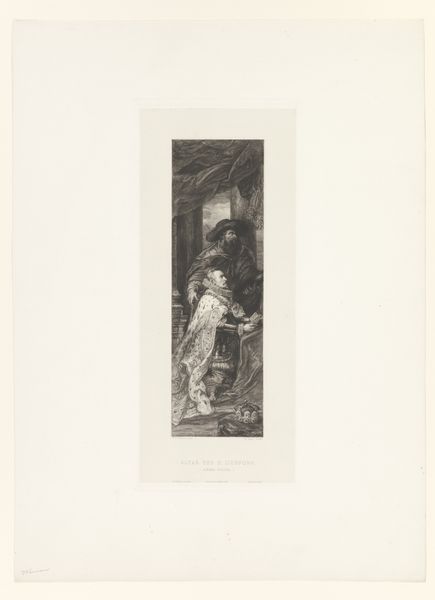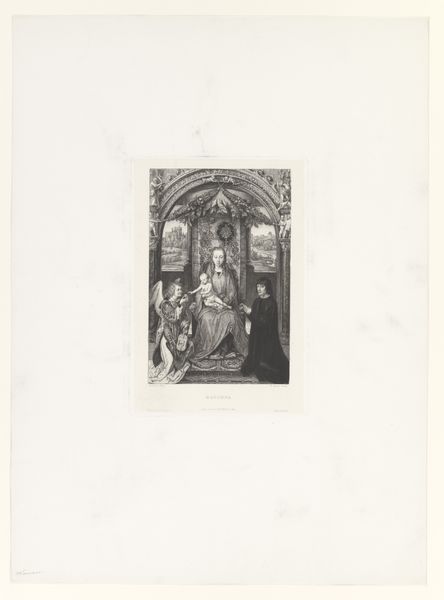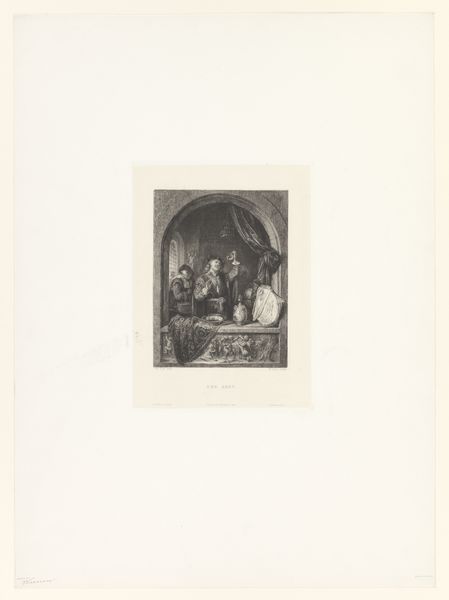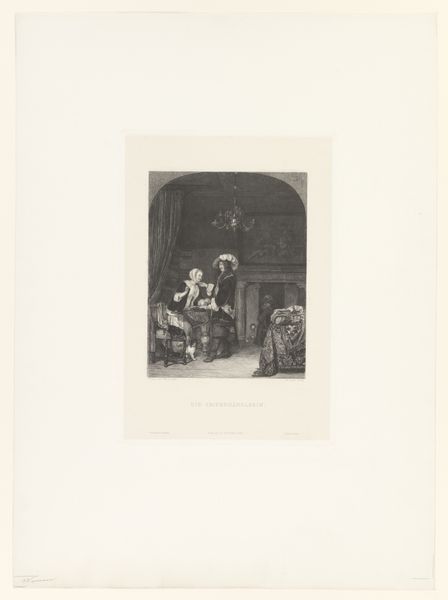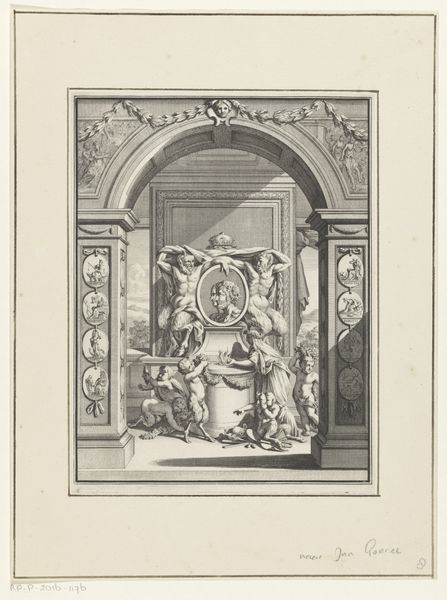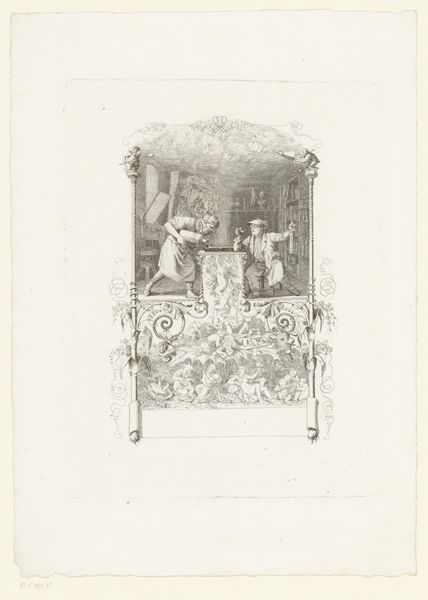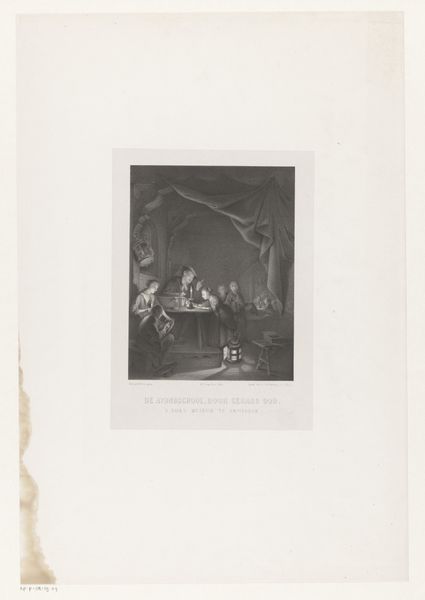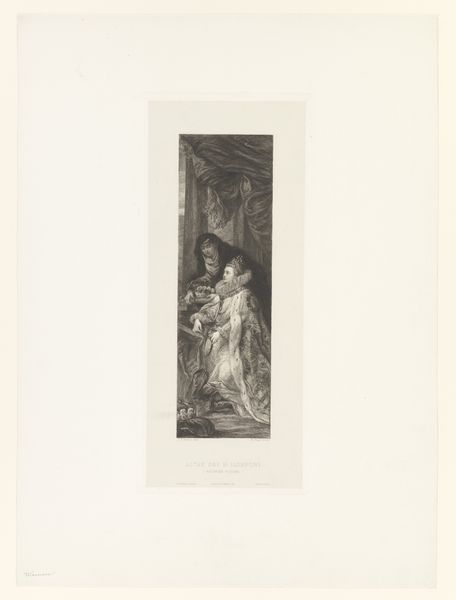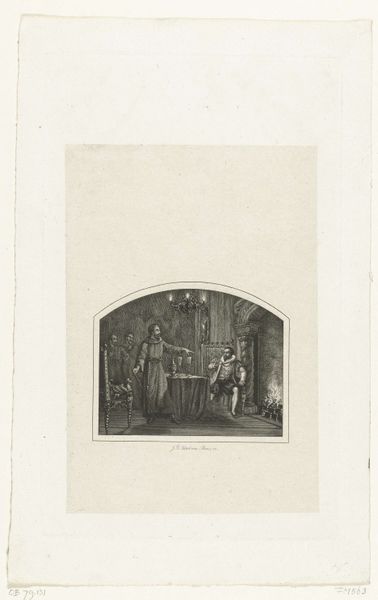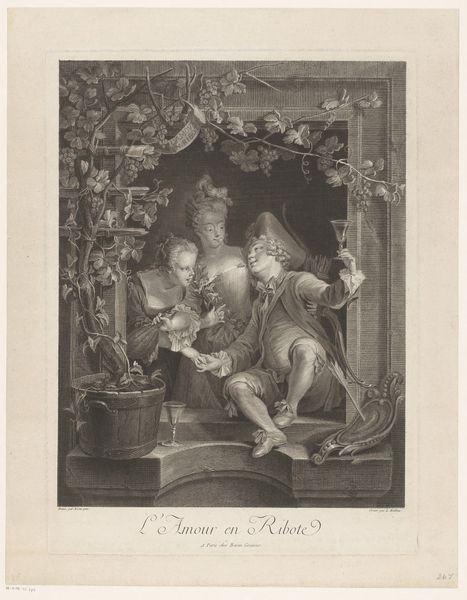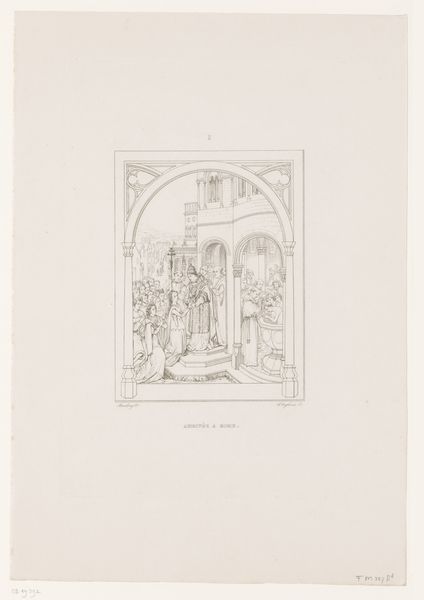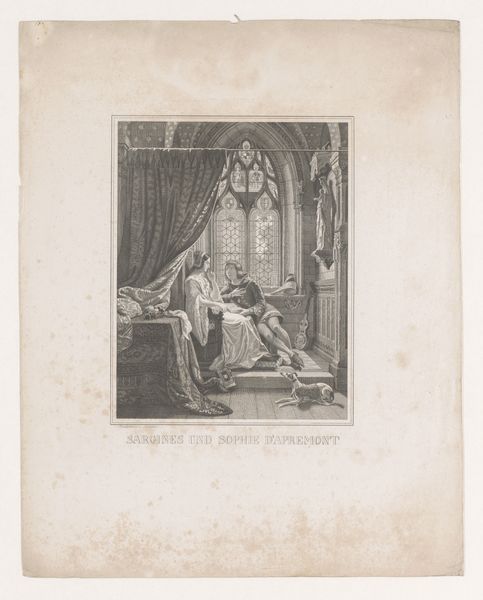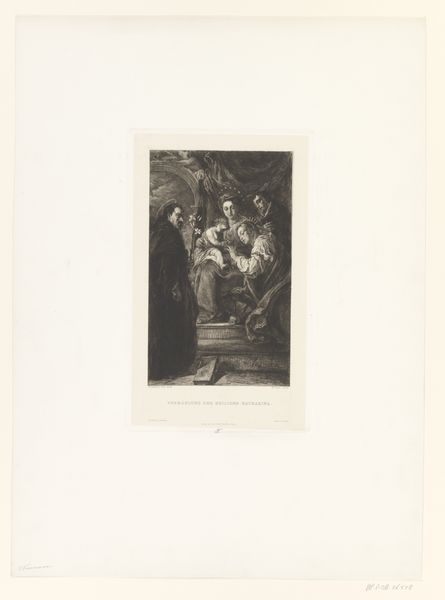
print, engraving
portrait
narrative-art
figuration
romanticism
genre-painting
engraving
monochrome
Dimensions: height 542 mm, width 380 mm
Copyright: Rijks Museum: Open Domain
Curator: This engraving, titled "Bellenblazende jongen," which translates to "Boy Blowing Bubbles," dates from somewhere between 1816 and 1833. Its maker is Roelof van der Meulen, and it currently resides in the Rijksmuseum collection. Editor: It's evocative, isn’t it? The stark monochrome lends a certain gravitas to such a playful subject. I am curious about how that finish affects perceptions of play and class—this seems too elegant to really convey how difficult bubble blowing could be! Curator: Absolutely. Meulen has positioned this simple act within a meticulously constructed narrative. Genre painting during this period often served a didactic purpose. By placing the boy at the window, a visual frame within a frame, Meulen situates the viewer as an observer of everyday life while prompting contemplation on childhood. Note, too, the prominent presence of the Royal Museum and an almost botanical, windowed case, also serving as additional framing elements. The sunflower—an exotic material, or luxury good for the domestic home in this period! Editor: The etching method really lends itself to this scene. The detail work on the flora and the interior domestic scene, those different textiles, and surfaces must've been grueling. All that careful articulation to represent what, by definition, would only be achievable using manufactured metal, and ink… so many hands. So much labor condensed onto this tiny monochrome scene… but is that just labor being displayed as 'luxury?' Curator: Exactly. The print as a medium itself democratized access to art, spreading imagery far beyond the confines of wealthy patrons, creating broader socio-political discourse through visual representation. Editor: So we’re both observing everyday lives? Those are just class distinctions impacting whose “everyday” lives we find rendered—in this case, domestic tranquility! Curator: Perhaps… Still, by choosing an ostensibly mundane activity, Meulen underscores the transience of beauty. The bubble becomes a symbol of fleeting existence. Editor: And labor, maybe, in what kinds of childhood we choose to remember. What efforts of creation are present or absent in a “scene” like this. I suppose thinking about this makes me wish prints were considered with a little more... seriousness and engagement, perhaps as the cultural work of dissemination itself. Curator: That's a lovely perspective. Thinking about what these prints allow us to disseminate through art and culture is valuable here.
Comments
No comments
Be the first to comment and join the conversation on the ultimate creative platform.
